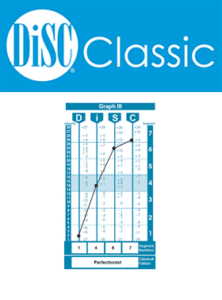 Built into my experience of DiSC® is a cautionary tale about using the tools in employment screening. My first exposure to any DiSC assessment was almost a decade ago. Assessment solutions were not new to me by any means, but at the time DiSC was not on my radar. In my case, the department head where I was all but certain to land my next gig wanted me to sample the assessment as I would be working with it frequently in the course of helping clients. I happily obliged. Then it struck me: I wonder if she wants to see my results before officially offering me the position. (After years of education reinforcing “critical thinking” this notion could hardly be construed as paranoid delusion.)
Built into my experience of DiSC® is a cautionary tale about using the tools in employment screening. My first exposure to any DiSC assessment was almost a decade ago. Assessment solutions were not new to me by any means, but at the time DiSC was not on my radar. In my case, the department head where I was all but certain to land my next gig wanted me to sample the assessment as I would be working with it frequently in the course of helping clients. I happily obliged. Then it struck me: I wonder if she wants to see my results before officially offering me the position. (After years of education reinforcing “critical thinking” this notion could hardly be construed as paranoid delusion.)
With that thought tucked in the back of my mind, I took the assessment. I came out an “S”—or what we might have even called a “high S” since this was back in the days of the vastly outmoded DiSC Classic 1.0 Graphs and the questionable natural/adaptive concepts.
The trouble? This wasn’t really me. This wasn’t my true style. While the outcome caused no harm, it didn’t help me at all either.
Once I was in my new role, my manager and I revisited my results. Knowing the tool better by then, I shared with her how remarkable it was that the simple “uncertainty” injected into my assessment experience could so easily influence the outcome! She said this is precisely why using DiSC in hiring should be done—if at all—only as one data point. After all, I had been honest in my responses. I do display those supportive and steady characteristics. It’s just they got consciously (and, likely, unconsciously) played up as I was applying for a customer support role.
So, what’s my real style? I’m a DC.
Ever since Wiley introduced computerized adaptive testing to the Everything DiSC® model, my results have been consistent without exception. My dot is always found at the edge of the circle near to the word Challenge. My priorities taken together are consistently Challenge, Results, and Accuracy.
Knowing where my dot fits on the model and the knowledge that is gained in the reporting process is crucial to how I’ve experienced DiSC in the real world.
Perspective
I’ve gained a new perspective on the interplay of styles. Where perhaps I had previously only seen incompetence, for example, I now better understand how each team member or coworker brings different qualities to the table that ultimately make the team stronger. In fact, this diversity can be critical. In my eyes, a lot of the Influencer-style behavior related to the need for social interaction didn’t always seem like a valuable part of work. However, the networking my colleagues would engage in was critical to landing new business and helping the whole firm. These good-natured people made it look so easy because they were so deft in their dealings.
Persistence
Using the Everything DiSC tools, I have come to recognize that sometimes I only need to change my approach rather than giving up or putting the circumstance in the “loss” column. DiSC has educated me on ways to dial up certain traits and dial down others according to how I perceive the needs and preferences of those around me. This by no means is about camouflaging who I am or being disingenuous, it’s about looking at situations from the other person’s perspective through people-reading.
Productivity
As I continue to apply DiSC theory in the years ahead, both in my professional and personal life, I’m pretty sure I’ll discover fresh insights. But, no matter with whom I’m interacting or what project we’re working on, I’m glad to have a tool that provides such tangible results.

